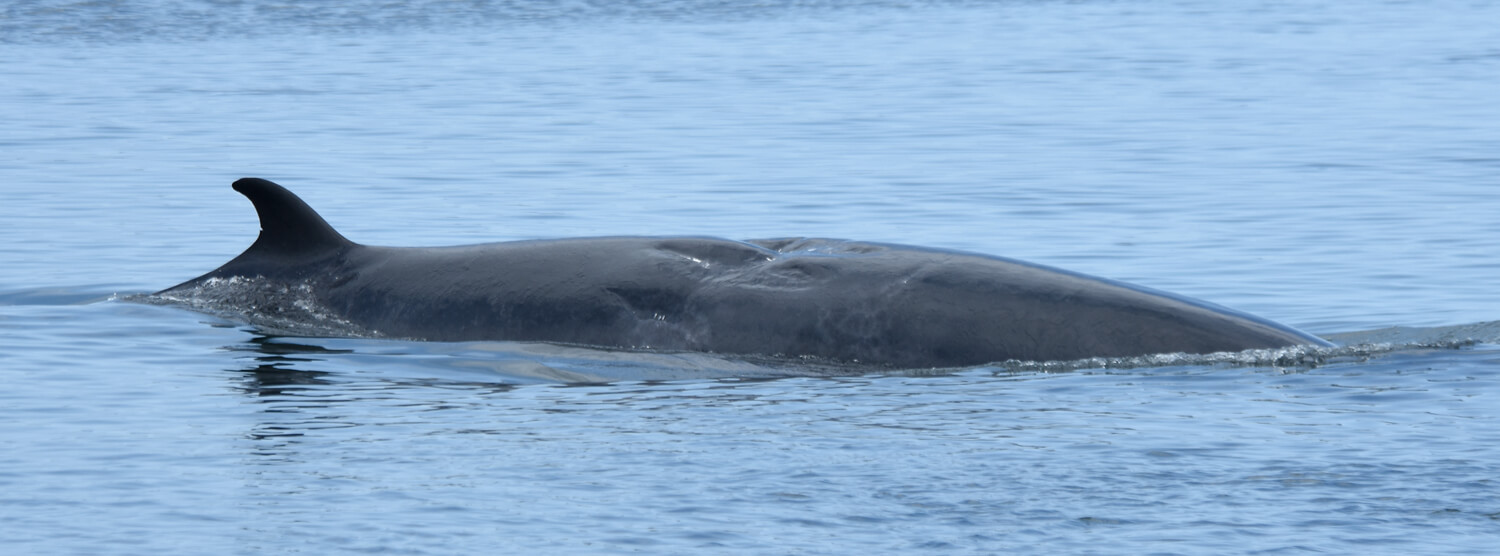Three Scars
Minke Whale


-
ID number
Ba208
-
Sex
unknown
-
Year of birth
unknown
-
Known Since
1993
Latest news from the publications Portrait de baleines
Named by the Ocean Research and Education Society (ORES) team, this regular visitor to the Estuary owes its moniker to three deep, broad scars on its back between its head and dorsal fin. Visible on both flanks, they are believed to be the result of an entanglement in fishing gear which occurred prior to its identification in 1993. Three Scars was observed several times this summer in the Saguenay–St. Lawrence Marine Park.
The marine mammals of the St. Lawrence are threatened, like many other species in the world, by entanglement in fishing gear. Three Scars seems to have survived several of these events, but such is not the case for all entangled animals. On June 16, a minke whale carcass was found adrift, with a rope in its mouth attached to six crab traps. A number of measures have been implemented to prevent the risk of entanglement. The material used in some fishing gear has been modified, but the threat is still real and mortalities are recurrent. For any incident involving entangled marine mammals, please immediately notify Marine Mammal Emergencies at 1-877-7baleine. Actions will be undertaken to assist the whale in difficulty.
In 2004, it was freed from fishing gear in which its mouth and back were trapped, thanks to the rapid and coordinated work of the Quebec Marine Mammal Emergency Response Network, Marine Park officers and the ORES team. A video report of this rescue can be viewed at the : CIMM. In 2008, Three Scars showed fresh marks on both sides. Fishing gear again?
This minke whale is well known to the team at the Ocean Research and Education Society (ORES), who named it Three Scars. ORES was founded in 1978 at Les Bergeronnes by Canadian biologist : Ned Lynas, pioneer of studies on the St. Lawrence minke whale. A distinguished and passionate lecturer, Ned spent his entire summers on the water with students and interns from around the world. Upon his death in 2002, his Swiss German assistant and research partner of 10 years, Ursula Tscherter, took over the reins of the organization. In 2012, she undertook a master’s degree (since completed) on the feeding ecology of minke whales at the University of St. Andrews in Scotland and took a pause from her work in the St. Lawrence. In November 2013, she announced that ORES’ activities in the St. Lawrence would not be resumed. We warmly commend the excellent work conducted by ORES and team on the minke whale, and regret the departure of a valued Portrait de baleines partner that we will miss dearly.
The Mériscope, a research station based at Portneuf-sur-Mer outside the Marine Park, has never observed this minke whale in its area. It recently introduced Three Scars into its minke whale catalogue however under the code Ba208 from ID photos taken by the GREMM team. The team at the Mériscope, organization founded by biologist Dany Zbinden (also of Swiss German origin) in 2001, developed a catalogue of St. Lawrence minke whales based on observations made from 2001 to 2014. Even if the Mériscope’s mission aims to study the biology of St. Lawrence marine mammals through various research projects, its involvement in education has been becoming increasingly important. After having hosted some 300 interns from around the globe, the team would set up in Longue-Rive where it planned to create, in collaboration with the municipality, an interpretation centre at the church of Sault-au-Mouton.


